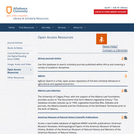
A guide to Open Access Resources consisting of scholarly journals, student dissertations, legal repositories, scientific publications and more.
- Subject:
- Education
- Material Type:
- Data Set
- Provider:
- Athabasca University
- Date Added:
- 09/08/2016

A guide to Open Access Resources consisting of scholarly journals, student dissertations, legal repositories, scientific publications and more.
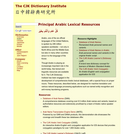
The CJK Dictionary Institute was originally established for Chinese, Japanese, and Korean (CJK) resources, but has been expanded in recent years to other languages, including Arabic. The many Arabic resources available through the CJK Dictionary Institute include databases of proper nouns, transliteration programs, dictionaries, databases, articles related to transcription and translation issues, and more. The institute also provides software developers with dictionary data as well as consulting services.

The goal of this class is to prove that category theory is a powerful language for understanding and formalizing common scientific models. The power of the language will be tested by its ability to penetrate into taken-for-granted ideas, either by exposing existing weaknesses or flaws in our understanding, or by highlighting hidden commonalities across scientific fields.

This course covers concepts of computation used in analysis of engineering systems. It includes the following topics: data structures, relational database representations of engineering data, algorithms for the solution and optimization of engineering system designs (greedy, dynamic programming, branch and bound, graph algorithms, nonlinear optimization), and introduction to complexity analysis. Object-oriented, efficient implementations of algorithms are emphasized.

This class covers topics on the engineering of computer software and hardware systems. Topics include techniques for controlling complexity; strong modularity using client-server design, operating systems; performance, networks; naming; security and privacy; fault-tolerant systems, atomicity and coordination of concurrent activities, and recovery; impact of computer systems on society.

This resource is a video abstract of a research paper created by Research Square on behalf of its authors. It provides a synopsis that's easy to understand, and can be used to introduce the topics it covers to students, researchers, and the general public. The video's transcript is also provided in full, with a portion provided below for preview:
"Real-world data and real-world evidence are terms widely used in the field of health care. In fact, various stakeholders are showing increasing interest in using real world data and real world evidence. Pharmaceutical companies, for example, use real world data for various purposes—from the early stages of development to post-launch. One hot topic focuses on using real world data and real world evidence to support regulatory decision making to deliver drugs faster to patients with high medical needs. This has been the subject of active discussion in the US, Europe, Japan and other countries, leading to regulatory reform and improvement of the implementation environment. However, there are barriers to the regulatory acceptance and use of both real world data and real world evidence. Real world data should be evaluated not only for quality but also for data relevance. There is a lack of universally accepted methodological criteria..."
The rest of the transcript, along with a link to the research itself, is available on the resource itself.
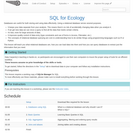
Databases are useful for both storing and using data effectively. Using a relational database serves several purposes. It keeps your data separate from your analysis. This means there’s no risk of accidentally changing data when you analyze it. If we get new data we can rerun a query to find all the data that meets certain criteria. It’s fast, even for large amounts of data. It improves quality control of data entry (type constraints and use of forms in Access, Filemaker, etc.) The concepts of relational database querying are core to understanding how to do similar things using programming languages such as R or Python. This lesson will teach you what relational databases are, how you can load data into them and how you can query databases to extract just the information that you need.
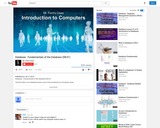
The first video in our database lesson, part of the Introduction to Computer series.
This video looks at the basics of databases. We define database, as well as key terms to know.
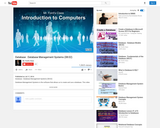
Database Management Systems is the software that allows us to create and use a database. This video looks at the DBMS, their functions, some examples of popular software solutions and a quick look at Structured Query Language (SQL)
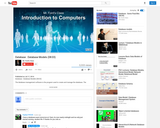
The database management software is the program used to create and mange the database. The database model is the architecture the DBMS used to store objects within that database.
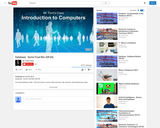
Our final database video. This one looks at some odds and ends. We examine: Data Warehouse, Data Mining, Big Data. I also talk about the ethics of data mining from the NSA and CDC, and how they are different.
We also give out top picks for the lesson.
Links from Video:
•http://www.w3schools.com/sql/
•What is Database & SQL by Guru99 http://youtu.be/FR4QIeZaPeM
•What is a database http://youtu.be/t8jgX1f8kc4
•MySQL Database For Beginners https://www.udemy.com/mysql-database-for-beginners2/
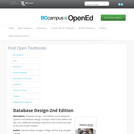
Database Design - 2nd Edition covers database systems and database design concepts. New to this edition are SQL info, additional examples, key terms and review exercises at the end of each chapter.
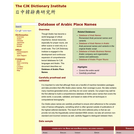
This project is an attempt to build a comprehensive database of Arabic place names that covers the entire world, not just place names in the Arabic speaking world. The place names are proofread carefully to ensure adherence to the rules of hamza orthography, something often ignored in most publications. The database gives the correct name in Arabic script, its name in English or transliteration, spelling variants, and common errors in spelling. Frequency of variants is also given.

This course examines the theory and practice of using computational methods in the emerging field of digital humanities. It develops an understanding of key digital humanities concepts, such as data representation, digital archives, information visualization, and user interaction through the study of contemporary research, in conjunction with working on real-world projects for scholarly, educational, and public needs. Students create prototypes, write design papers, and conduct user studies.
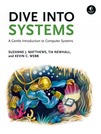
Dive into Systems is a free, online textbook that serves as a gentle introduction to computer systems, computer organization, and parallel computing. The book is intended for an audience that has only a CS1 background. It guides readers through a vertical slice of a computer to develop an understanding of a variety of systems topics, including:
- how a computer runs a program, from a program expressed in a high-level language to low-level binary representation and circuits
- programming in C and Assembly, assuming a CS1 background
- introduction to operating systems and the systems costs that affect program performance (the memory hierarchy, caching, and code optimization)
- introduction to parallel computing with shared memory and pthreads
Dive into Systems is designed to be present topics in as independent manner as possible so that it can be used as a primary textbook for a wide range of introductory-level computer systems courses, or as a supplemental background textbook for upper-level courses that cover Operating Systems, Computer Architecture, Compilers, Networks, Databases, and Parallel Computing.

This is a Canvas module to help students become familiar with using library databases and understand the utility in searching across multiple databases. Under "Choosing Library Databases: Subject-Specific Databases", faculty should choose the disciplinary page(s) that are most appropriate for their course.

This graduate seminar is taught in a lecture and lab exercise format. The subject matter is tailored to introduce Environmental Engineering students to the use and potential of Geographic Information Systems in their discipline. Lectures will cover the general concepts of GIS use and introduce the material in the exercises that demonstrate the practical application of GIS.
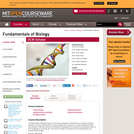
Fundamentals of Biology focuses on the basic principles of biochemistry, molecular biology, genetics, and recombinant DNA. These principles are necessary to understanding the basic mechanisms of life and anchor the biological knowledge that is required to understand many of the challenges in everyday life, from human health and disease to loss of biodiversity and environmental quality.
Course Format
This course has been designed for independent study. It consists of four units, one for each topic. The units can be used individually or in combination. The materials for each unit include:
Lecture Videos by MIT faculty.
Learning activities, including Interactive Concept Quizzes, designed to reinforce main concepts from lectures.
Problem Sets you do on your own and check your answers against the Solutions when you’re done.
Problem Solving Video help sessions taught by experienced MIT Teaching Assistants.
Lists of important Terms and Definitions.
Suggested Topics and Links for further study.
Exams with Solution Keys.
Content Development
Eric Lander
Robert Weinberg
Tyler Jacks
Hazel Sive
Graham Walker
Sallie Chisholm
Dr. Michelle Mischke

Fundamentals of Biology focuses on the basic principles of biochemistry, molecular biology, genetics, and recombinant DNA. These principles are necessary to understanding the basic mechanisms of life and anchor the biological knowledge that is required to understand many of the challenges in everyday life, from human health and disease to loss of biodiversity and environmental quality.
Course Format
This course has been designed for independent study. It consists of four units, one for each topic. The units can be used individually or in combination. The materials for each unit include:
Lecture Videos by MIT faculty.
Learning activities, including Interactive Concept Quizzes, designed to reinforce main concepts from lectures.
Problem Sets you do on your own and check your answers against the Solutions when you’re done.
Problem Solving Video help sessions taught by experienced MIT Teaching Assistants.
Lists of important Terms and Definitions.
Suggested Topics and Links for further study.
Exams with Solution Keys.
Content Development
Eric Lander
Robert Weinberg
Tyler Jacks
Hazel Sive
Graham Walker
Sallie Chisholm
Dr. Michelle Mischke

This resource is a video abstract of a research paper created by Research Square on behalf of its authors. It provides a synopsis that's easy to understand, and can be used to introduce the topics it covers to students, researchers, and the general public. The video's transcript is also provided in full, with a portion provided below for preview:
"The spread of antibiotic resistance is one of the most pressing threats facing global health. Every year, approximately 700,000 deaths worldwide can be traced to antibiotic resistance. That makes it crucial to identify antibiotic resistance genes (ARGs) and their transmission between humans and the environment. Unfortunately, because they rely on curated databases and are not sensitive to certain mutations, many methods can overlook novel ARGs. Now, a new machine learning method called HMD-ARG could provide researchers with a more powerful alternative. Taking sequence encoding as input, it determines whether an input sequence is an ARG, what antibiotic family the ARG is resistant to, its mechanism of resistance, and whether it is intrinsic or acquired, and even the sub-class of antibiotic the ARG resists, if it happens to be a beta-lactamase, all without querying against existing sequence databases. The HMD-ARG database is the largest of its kind..."
The rest of the transcript, along with a link to the research itself, is available on the resource itself.